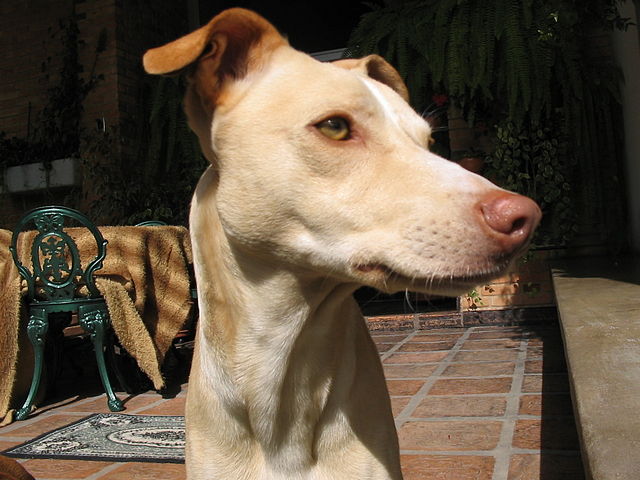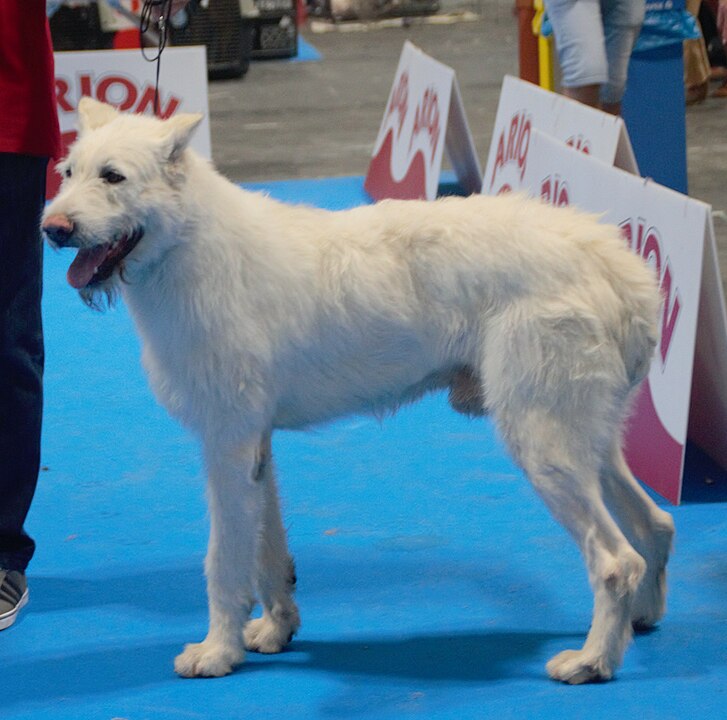The Rampur Hound is an Indian sighthound, sometimes called the Rampur Greyhound. He originated about 300 years ago and was used to hunt large animals – many of them quite dangerous such as the lion, tiger and other big cats, as well as the jackal. Similar in coat and appearance to his relative the (English) Greyhound, he also possesses a long muzzle, long legs and an overall narrow frame. This is a very rare breed that isn’t well known in most of the world. In India he is kept primarily for hunting and coursing and is not usually a companion, however he has the capability of being a great pet in the right home. He is loyal and attentive to his owner albeit can be somewhat shy. For this reason, it is super important to socialize the dog while still young.
The Rampur Hound is gentle with children although can be overly enthusiastic when happy, which means he may not be the best choice for a family with toddler-age kids. Furthermore he is prey-driven around small animals and may try to chase (or hunt) the family cat. His prey drive is so developed that he may also try to go after smaller dogs. He may be able to live peacefully with supervision, but it isn’t recommended to leave him alone with a smaller pet. With people, he is affectionate to those whom he knows well and can even be protective of his family if true danger actually arises. With strangers, he is very aloof. It is worth mentioning again that socialization is key – as an unsocialized Rampur can become a fear-biter when put into a stressful situation with a stranger.
Rampurs, like all sighthounds, love to run! Just make sure to keep out of the way while they are racing around – they have been known to knock small people and children to the ground who happen to step into their path! Once they start, it takes a little while for them to stop because of their high speed. In fact, they are one of the fastest dogs in the world! This is an energetic and playful hound that has more get-up-and-go than some of their lazier sighthound relatives. They can live in an apartment in necessary (and make good quiet neighbors), although will need lots of extra exercise in that type of situation. They should be given one walk a day, supplemented with time to run in a fenced area. In general, this breed is more of a sprinter than an endurance animal so fenced-yard-running is the most important. 
The intelligent Rampur can be an obedient dog when taught by someone whom he trusts. It is more difficult for him to work with a stranger, so a trainer must gain his trust from the beginning. He doesn’t tend to be hard-headed, can be housebroken quickly and is an average learner in terms of obedience training. It is very important to work on the recall command in particular, although be aware that it can be extremely hard to call a sighthound off of a running rabbit (or similar) once he has already taken chase! It is recommended to keep him on-leash when in an unfenced area that may contain small animals.
Rampur Hounds are generally healthy although all purebreds and mixed breeds alike can develop health issues. The issues that the Rampur is slightly more disposed to include bloat, a sensitivity to anesthesia and osteosarcoma (bone cancer). This said, many Rampurs actually live between 13-15 years of age – a very long lifespan for a large/giant breed! In terms of grooming, they are clean dogs that don’t require professional grooming. A weekly brushing and nail trim should take care of the majority of the work. Otherwise, make sure to keep the teeth clean (as they are more predisposed to bad/dirty teeth than some other breeds) and give the occasional bath when needed.
Rampurs tend to be one-person dogs. They can live with a family but will tend to choose one particular person as “their favorite”. This is the person whom they will tend to listen more to and whom they may be the most protective towards. If that person leaves for a period of time, the Rampur may experience some separation anxiety. This shows that while they need little maintenance care, they do need a good deal of attention. Luckily, while they should be given some training and mental stimulation, they don’t require a lot. A soft bed, a fenced yard, and an owner who is frequently home is often a great combination for a Rampur.



